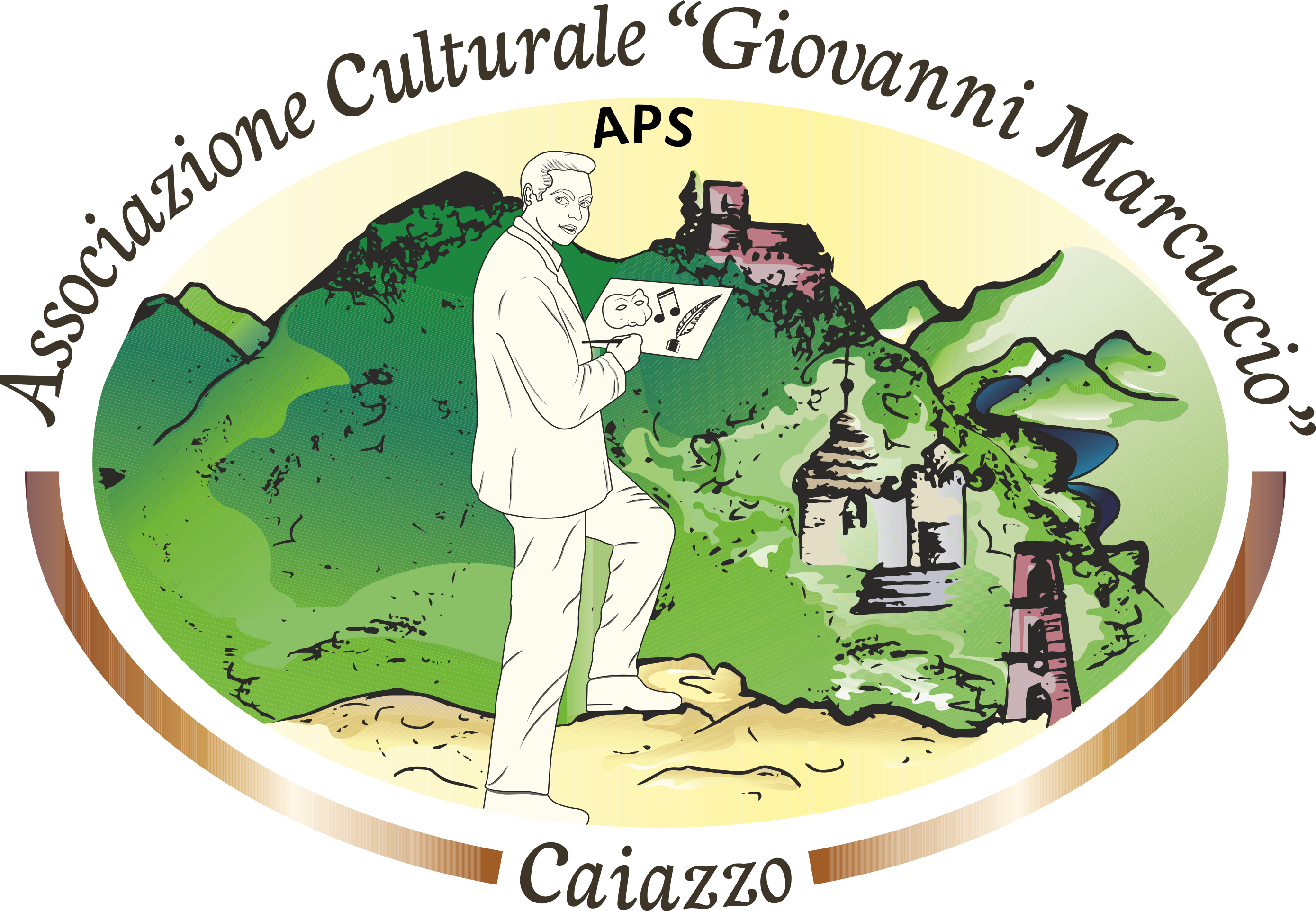The Church of Santissima Annunziata
The Church of the Annunciation or Ave Gratia Plena, owes its name to the announcement made by the Archangel Gabriel to the Virgin Mary about the miraculous conception of Jesus. To the existing structure already in the fourteenth century, probably at first, only as a place of worship, after 1336 was added the Hospital established by the Brotherhood of Jesus and Mary in 1333. The Church was administered by the University (that is, by the municipality), while the Hospital was the Mistress of a Brotherhood. The Annunziate were religious complexes characterized both by the Wheels of the Exposed and by the Hospitals. Infattti, according to some historical notes, the Hospital served at the end of 600, both as accommodation for poor foreigners and as a place of care for children, ‘innocent’, abandoned by families of origin, in perfect anonymity, at the wheel of the exposed, managed by the Poor Clares. Starting from 1736 a radical transformation of the Church was started, starting from the realization of the stucco by the Neapolitan Nicolò Tagliacozzi Canale. After 1866, the church passed to the Congregation of Charity, dedicated to the care of the sick. Closed by the earthquake of 1930, in 1960 it increased the title of Cathedral held for all the years 70. Abandoned after the earthquake of 1980, and subsequently restored, is currently used as a cultural space. The Annunziata Church owes its current appearance to the renovation carried out in the years 1740-1768. The new Church occupied the surface of the previous, with a cross-shaped bowl design in the center and two caps on the two arms and two hats on the lower sides. The stucco decoration made by the artists Canale and Zagarolo was decided. The Church can be accessed through two entrances, The main entrance with the very particular decorated portal is accessed through a small wide guarded by a wrought iron gate, closed around 1842 to avoid desecration.
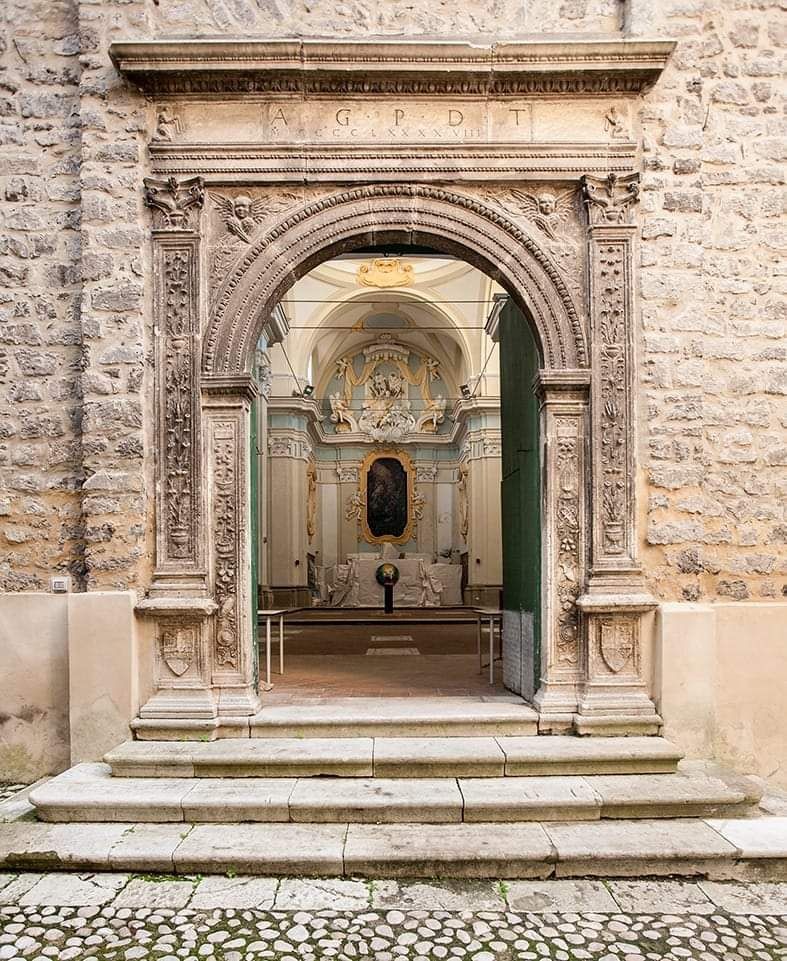
Portal (1498) on the lintel reports A. G. P. D. T (AVE GLATIA PLENA DOMINUS TECUM: I GREET YOU FULL OF GRACE, GOD AND WITH YOU)
THE PORTAL
The most important element, still fully visible today, is the portal dating back to 1498 (date reported on the lintel). In addition to the date, the portal bears the inscription A.G.P.D.T.(AVE GRATIA PLENA DOMINUS TECUM: I GREET YOU FULL OF GRACE, GOD IS WITH YOU, sentence pronounced by the angel Gabriel, in the presence of the young Virgin Mary to offer her the message of the conception and the upcoming birth of Jesus. Presented by a staircase in limestone, the portal is made of travertine, formed by side pillars in candelabra, with central arch.
Portal decorations
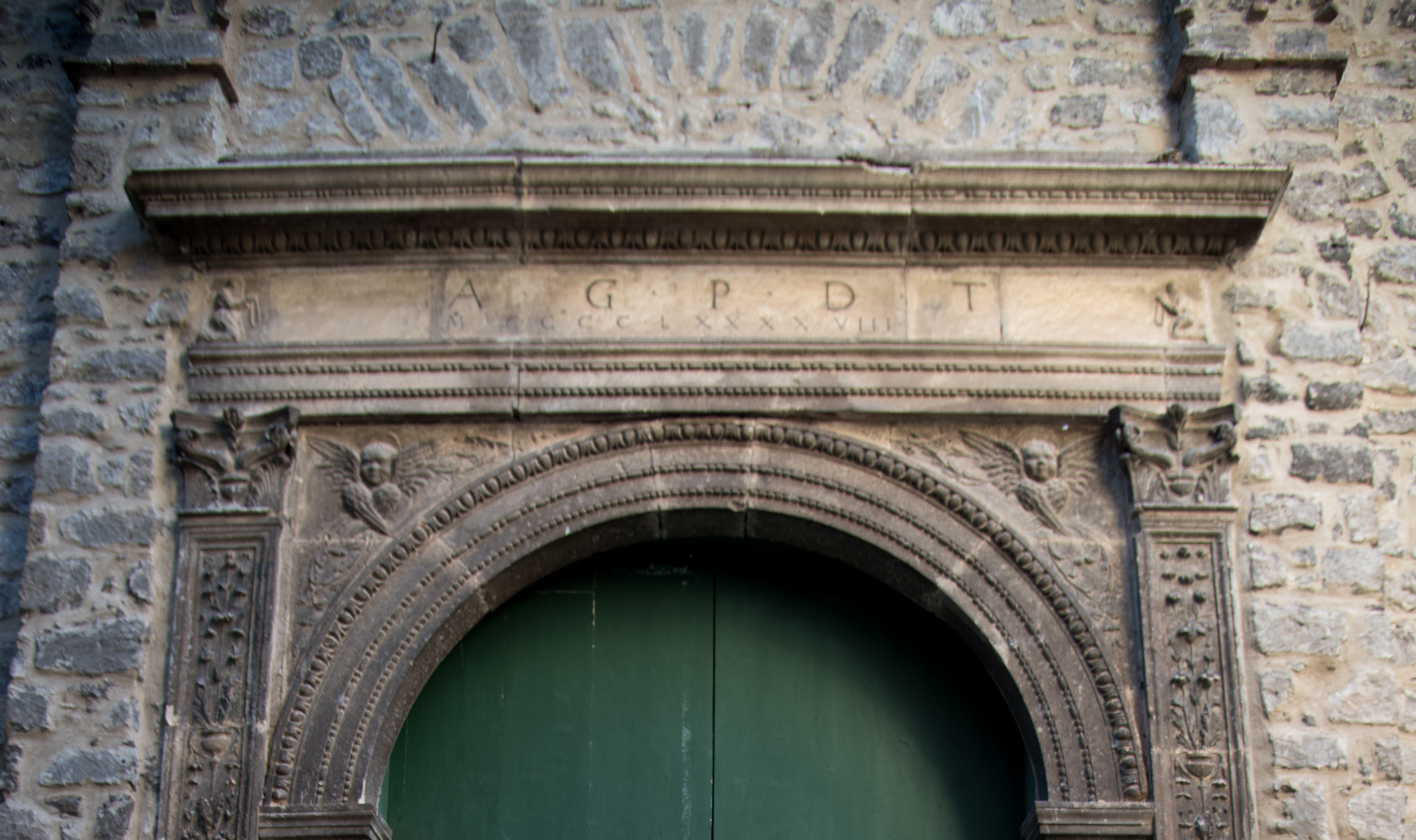
The Renaissance decoration is inspired by the portal of the nearby Egyptian Chapel or S.Agnese (built in 1493). The portal that rests on pillars, is framed by architrave (horizontal element that rests on pillars) and pilasters ( vertical and lateral elements of the structure), is inspired by Greco-Roman elements and decorative elements taken from the triumphal arches, without however respecting the symbolism, different elements are placed side by side for pure aesthetic pleasure. There are: candelabra friezes, vegetal and grotesque motifs, toothed frames and ovules, weapons, trophies and sets of weapons (panoplies).

On the side of the inscription we find portraits of the Battenti kneeling.
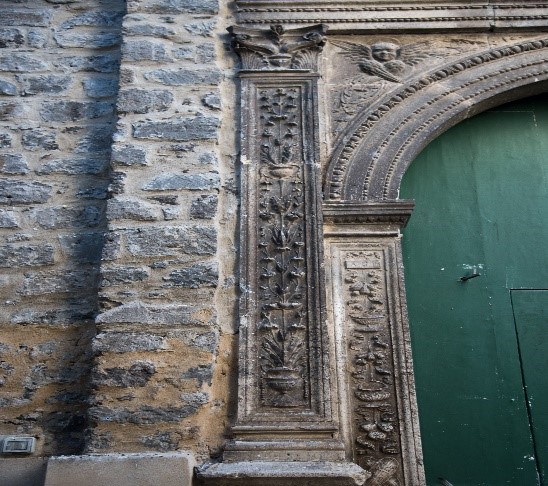
We then find pagan elements often adopted in Christian art, such as, dolphins ( to symbolize the ferrymen of souls, pomegranates, double meaning of life and death, as a symbol of fertility for the richness of the beans, but also assumed and symbol of the martyrdom of Christ).
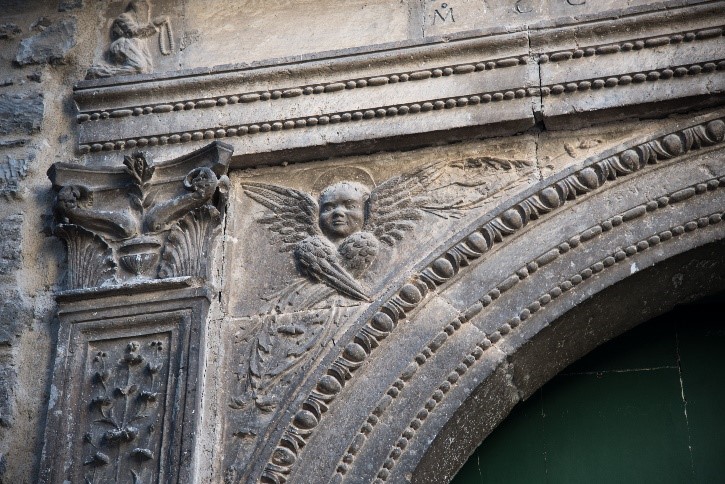
Cherubim, amgeli with 4 wings, medallions with eight-pointed stars ( symbol of the Saviour and the eight beatitudes).
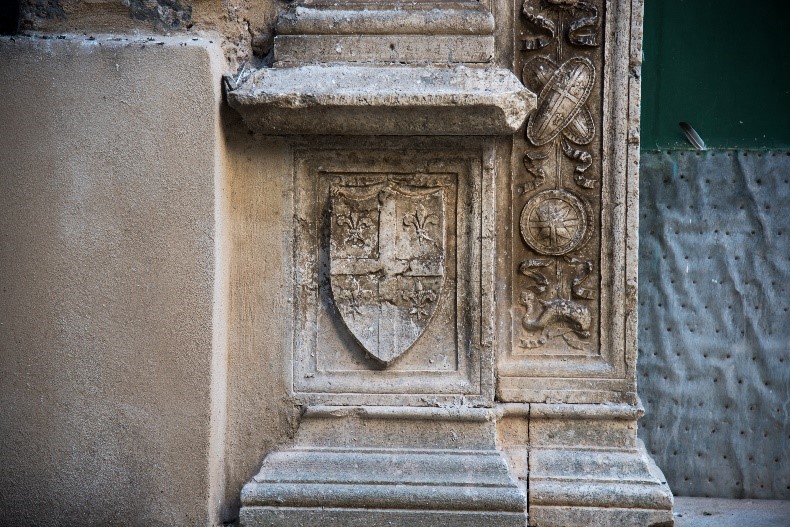
At the base of the pillars are also visible coats of arms with lilies, coat of arms of the Municipality of Caiazzo.
